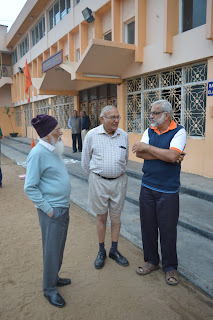The Leader of the Free World has been elected, and His election has shaken every single hitherto accepted political postulate that we have known. To say that the election has ‘ruffled feathers’ would be a gross
understatement.
Here are the five major takeaways not only from this
election, but also the global anti-establishment movement that brought Modi and
Kejriwal to power in India, propelled Podemos into the Spanish parliament, removed
Britain from the EU and ended Hillary Clinton’s career.
1.
A transformation of the current ruling class
In just 2014, the world had Manmohan Singh in India, David
Cameron in the UK, Chancellor Merkel in Germany and most significantly
President Obama in the White House, with numerous Cambridge, Oxford and Harvard
degrees, Nobel prizes and accolades among themselves and perhaps every large
corporation in the world financing them. This is now a thing of the past.
The establishment, or the status quo which ruled free
democracies for the past few decades, will now undergo an open heart surgery.
Dynasties such as the Nehru-Gandhi in India, Kennedy, Bush and Clinton clans in
the US would disappear. With corporations funding them and party workers
revering them, these elite, erudite, idealistic yet quixotic specimens,
pandering to both the left and the right with fantastic political correctness,
would soon be jobless. Power structures with new faces and new corporations holding
the strings would emerge.
2.
Majority rule
Trump has reiterated what Modi proved in India in 2014. A
majority does indeed exist and can be converted into a vote bank, to the
point that the minorities can be completely overlooked (Modi’s BJP does not
have a single non-Hindu MP in the Lok Sabha). Trump, however, went several steps
further when he openly dehumanized Latinos and Muslims. His election has
been heralded by white nationalists in the US. Brexit too, was achieved by
glorifying the white British majority while discrediting the Polish immigrants
and the Syrian refugees. ‘Mr Brexit’ Nigel Farage actively campaigned for Trump
during the election season. Right wing fringe elements, whether or not they
enjoy Trump’s support are truly having the time of their life.
3.
End of Left high handedness
It is not as if the people living in democracies have suddenly become communal. Neither do they hate socialist ideas. Subsidies in India,
and Social Security and even Obamacare in the US, all socialist policies, have solid
groundswell support. It is the arrogance of the establishment that proved to be
its undoing. In India, the attitude with which the Congress handled the
Anna-Kejriwal movement (the first important tremor in India before their 2014
apocalypse), or the gall of the Democratic Party in the US which fielded a
candidate who was under trial in an ongoing FBI investigation, and had lied
several times under oath among many other things, are examples of this
arrogance. The electorate felt insulted and ‘threw in the cocktail’ at the
polling booth, as Michael Moore would put it.
4.
Political correctness.
The establishment was politically correct to the point where many found it cringe worthy. A very recent example is Obama’s
condolence message after the passing of Cuban dictator Fidel Castro: “His
passing evokes powerful emotions both here in the US and in Cuba,” the statement
read. One can easily see this deviousness as a ploy to dodge the two edged
sword (which took the throat of Canadian PM Trudeau). If Castro’s death would
have been lamented by the current President, then the massive Latino vote-bank
in South Florida (which is currently celebrating on the streets the tyrant’s
death), would have been offended. On the other hand, if Obama would have
pandered to these Latinos, it would have cast a dark cloud on his ‘monumental’
visit to the diplomatically isolated island in 2014 and his so called legacy as a
peacemaker.
Trump’s temperament needs no introduction and the fate of
political correctness under his regime as the Leader of the Free World is
anybody’s guess.
5.
Insulting the electorate’s intelligence
For the record, I do not think any electorate is ever
intelligent. But nobody likes to be called stupid. And Obama, David Cameron,
Hillary and the Gandhi family, with their overacting, did just that.
With their every generation attending Harvard, Oxford and
St. Stephens, Eton and Doon School, they tried to compensate their disconnect
with the real working class by heavily relying on their PR managers to do
everything. Hillary with her sociopathic laughter right from the
sight of balloons to the unveiling of the new Boeing aircraft, David Cameron in
his ridiculous impersonation of a working class man riding the Underground, and
Obama drinking beer mid campaign wearing a disgusting blue jacket. Who do these
elites think the common people really are? The electorate knows exactly who the
elites are, how much wealth they have and the aristocratic culture they belong
to.
Attention though. This is not a proletariat uprising. Trump
never visited a train, bus or poor little factories for photo-ops. Forget
declaring his taxes, he has repeatedly proclaimed how much wealth he has. Modi,
too, spared no expense while jet-hopping across the nation in Gautam Adani’s
private plane. The people know this. The electorate is just looking for better
actors.








